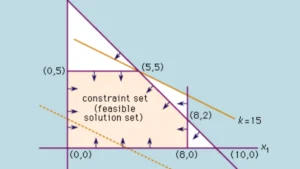Table of Contents
In Mathematics the Divisibility Rule of 7 is used to check a number that is completely divided by 7 without any remainder. The divisibility rule commonly employs digits to determine whether a given number is divided by a divisor. According to the divisibility rule of 7, if a number is divisible by 7, the last digit should be multiplied by 2 and then removed from the residual, leaving the last digit.
If the difference is less than or equal to 7, it is divisible by 7. In this article, we will be going to learn how to check the know if a number is divisible by 7 or not. Along with that, we will also learn about the Divisibility Rule of 7 with examples.
Divisibility Rule of 7
The divisibility rule, often known as the divisibility test, is a method for determining if a given integer is divisible by a fixed divisor without doing division. Unlike other numbers, 7 also has a specific divisible rule. The divisibility test of 7 allows us to determine whether a number is totally divisible by 7 without doing the division.
The divisibility rule of 7 has a shortcut way for determining whether a number is divisible by 7. Like we know that numbers ending with 0, 2, 4, 6, 8 are divisible by 2, in the same way, we can find which number can be divided by 7 without actually dividing the whole number.
7 Divisibility Rule
According to the divisibility Rule of 7, in order to determine whether a number can be divided by 7, its unit digit of the given number must be multiplied by 2, and the result must then be subtracted from the remaining original number (except the unit Digit). We say that an integer is divisible by 7 if the difference is zero or a multiple of 7. For instance, 343 is divisible by 7. Let’s prove the divisibility test of 7 below.
Explanation: The unit digit of 343 is 3.
- When we multiply the unit digit by 2, we obtain 6 (i.e., 3 x 2 = 6).
- The remaining portion of the provided number is 34.
- Take the difference between 34 and 6. = 34 – 6 = 28
- The obtained difference is 28, which is a multiple of 7. (i.e., 4 x 7 = 28)
- As a result, the provided number 343 is divisible by seven.
7 se Vibhajita Ka Niyam In Hindi
गणित में, 7 से विभाज्यता का नियम यह बताने में मदद करता है कि कोई संख्या 7 से विभाजित होती है या नहीं। इस नियम को इस प्रकार समझा जा सकता है:
7 से विभाज्यता का नियम:
किसी संख्या को 7 से विभाजित करने के लिए, निम्नलिखित प्रक्रिया अपनाएँ:
संख्या की इकाई के अंक (अंतिम अंक) को हटा दें।
हटाए गए अंक को 2 से गुणा करें।
जो संख्या बची है, उसमें से इस गुणित अंक को घटाएँ।
जो परिणाम प्राप्त होता है, उसे जाँचें:
यदि यह संख्या 0 या 7 से विभाजित है, तो मूल संख्या 7 से विभाजित होती है।
यदि नहीं, तो संख्या 7 से विभाजित नहीं होती।
उदाहरण:
संख्या 329 को जाँचें:
अंतिम अंक हटाएँ: 9
इसे 2 से गुणा करें: 9 × 2 = 18
शेष संख्या (32) से घटाएँ: 32 – 18 = 14
14 को 7 से विभाजित करें: 14 ÷ 7 = 2
चूंकि यह पूरी तरह से विभाजित है, इसलिए 329 7 से विभाजित है।
सरल परीक्षण:
यदि यह प्रक्रिया बार-बार करना मुश्किल लगे, तो आप सीधे संख्या को 7 से विभाजित करके देख सकते हैं कि शेषफल शून्य है या नहीं।
How to Check Divisibility Rule of 7 ?
It must be noted that a number is completely divisible by another integer if it leaves no remnant and a quotient is a whole number, this is also applicable in the divisibility Rule of 7. Let us now look at how to check if a number is divisible 7 by or not.
Step 1: Select the last digit or the unit digit of a number that you want to test. [ Eg: 147, unit Digit is 7]
Step 2: Multiply the unit digit by 2 (i.e., 7 x 2 = 14).
Step 3: Now, Subtracts the result, from the remaining of the original number to its left. [ Eg: remaining 147, remaining number 14 and find the difference between 14 and 14]
Step 4: Check obtained difference to see if it is a 0 or a multiple of 7. [ 14 – 14 =0 ]
Step 5: After examining, We say that a number is divisible by 7 if the difference is zero or a multiple of 7. (So, 147 is divisible by 7]
Divisibility Rule of 7 with Examples
For better understanding, let’s look at some examples to grasp the concept of the divisibility Rule of 7
Example 1: Determine whether the number 109 is divisible by 7.
Solution: The given number is 109.
Follow the instructions below to see if the number 109 is divisible by 7.
Step 1: Multiply the Unit digit of the given number by 2 = 9 x 2 = 18
Step 2: Subtract the remaining part of the specified number from the value obtained in step 1. (That is, 18) = 10 – 18 = -8, which is not a multiple of 7.
As per the divisibility Rule of 7, A number is said to be divisible by 7 if the difference is 0 or a multiple of 7
As a result, the given number 109 cannot be divided by 7.
Example 2: Determine whether 133 is divisible by 7.
Solution: The specified number is 133.
Follow the steps below to determine whether the number 133 is divisible by 7.
Step 1: Multiply the supplied number’s Unit digit by 2 = 3 x 2 = 6
Step 2: Subtract the remainder of the stated amount from the result of Step 1. (In other words, 6) = 13- 6 = 7, a multiple of 7 (7 x 1 = 7).
According to the divisibility Rule of 7, an integer is divisible by 7 if the difference is 0 or a multiple of 7.
As a result, the supplied number 133 is divisible by 7.
Example 3: Examine whether the number 245 is divisible by 7.
Solution: The given number is 245.
Follow the instructions below to see if the number 245 is divisible by 7.
Step 1: Multiply the Unit digit of the given number by 2 = 5 x 2 = 10
Step 2: Subtract the remaining part of the specified number from the value obtained in step 1. (That is, 10) = 24 – 10 = 14, which is a multiple of 7 (7 x 2 = 14).
The divisibility Rule of 7 states that an integer is divisible by 7 if the difference is 0 or a multiple of 7.
As a result, the given number 245 can be divided by 7.
| Related Articles | |
| Table of 14 | Table of 19 |
| Ordinal Numbers | Table of 4 |



 Greater Than and Less Than, Equal to Sig...
Greater Than and Less Than, Equal to Sig...
 Class 12 Mathematics Linear Programming ...
Class 12 Mathematics Linear Programming ...
 NCERT Solutions Maths Chapter 4 Determin...
NCERT Solutions Maths Chapter 4 Determin...










